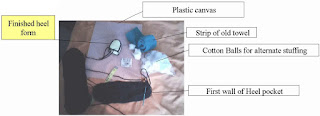I have been practicing Christmas music, and am wondering how/when/if it's appropriate to use the chimes stop.
I have fond memories growing up of the beautiful Christmas music played by our excellent ward organist. She often used chimes or bells in the Christmas songs, and I loved it.
However, the chimes stop on the church organ I use seems to be overly sustained. The chimes ring for a good 5 or more seconds after being played and released. To me, it sounds beautiful at first but after a line or so just makes the song sound very muddled. Not to mention the embarrassingly long ringing that follows at the end of a verse or song.
Do you use chimes? Does your organ have this same effect? Can you recommend any techniques for using chimes in Christmas music without having this happen? I appreciate any advice or wisdom you could give me on this topic!
I, too, love using the chimes around Christmas time, and I hope that these ideas can help you!
The first suggestion I have is to use them sparingly! Don't use them on every piece, and don't use them on every verse of a hymn. Figure out where they will be used most effectively, and only use them there.
In Prelude or Postlude Music
Some ideas:
Use them on every-other line, such as in this example:
Introduce your piece with just the melody played on the chimes, as above, but then play your prepared prelude on a more standard registration without chimes.
Perhaps these pieces will also inspire you:
As Congregational Accompaniment
For the introduction, introduce the first phrase of the melody on just the chimes, then switch to a standard registration to finish the introduction.
Similar to above, but play a chime tone, then the introduction on a standard registration. One example is to play La, So, Fa, Mi, Re, Do, La, So, Fa, Mi, Re, Do or a much shortened version of something like this, which I like to play before the introduction to "I Heard the Bells on Christmas Day":
Another option is to play an interlude between the verses on the chimes. Make sure it starts while the congregation is still holding the final note of the previous verse, so that they don't try to sing along, and make sure your music director knows it's coming.
As for playing while the congregation is singing, I tend to save that for the final verse of one of the hymns, or even the final chorus of the final verse, and I turn off the chime stop the second the last note is played, or immediately before playing the final note, so that it doesn't continue to ring for a long time afterwards. You'll have to see what works best with your organ through some trial and error. Yes, the chimes will blend together and muddle, but hopefully the congregational singing will cover some of that. It is a special treat, and for the final verse I think it is still okay to use periodically. The congregation generally loves it!
A few things to check
Many of the newer organs have alternate voicings. Sometimes, these other organs have a different sounding chimes/bells stop. You could check to see if this is the case and see if they would sound better or if they would add a nice variety and contrast to the standard chimes on your organ.
Check your artificial acoustics. Many organs have a switch that can turn on a reverberation that mimics the sound in a large room. These can make your chimes sound longer than they should. Make sure this effect is off.
Check to see if the chimes play all four voice parts, or if they only play the top note. If they play all four, there are a few things you can do.
If the chimes are on the swell instead of the great, you can accompany the congregation on the great, but solo out the melody on the swell with the chimes and a few other stops to provide support for the congregation, or use the melody coupler, which will pull the swell voices only onto the highest note you play.
If the chimes are on the great, consider playing the melody in unison (with both hands) on the final verse with the chimes added and no other parts being played. This will still provide a nice support for the congregation, but will prevent the chimes from muddling together so much.
I hope this helps!































